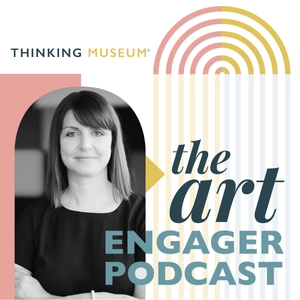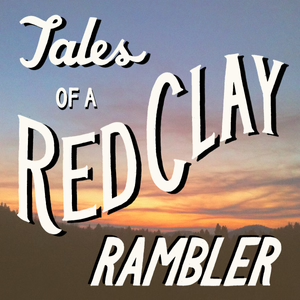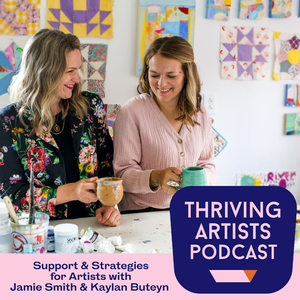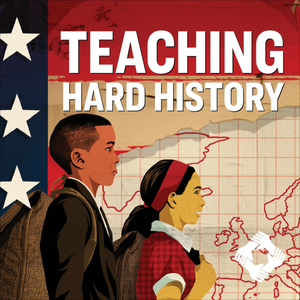
Why inclusive language matters with Margaret Middleton
02/02/23 • 28 min
1 Listener
I’m talking to Margaret Middleton today about what inclusive language is and why it matters.
Margaret Middleton is an American independent exhibit designer and museum consultant currently based in Belfast, Northern Ireland.
With a degree in industrial design from the Rhode Island School of Design and over 15 years of experience in the museum field, they work at the intersection of design and social justice.
We know museums aim to be welcoming places for everyone, but the ways museums communicate can unintentionally exclude and alienate visitors.
Likewise, when we’re working as museum teachers, guides and educators the words we choose when we communicate can hide unconscious biases and assumptions, especially about subjects like “family.”
10 years ago, Margaret created a tool called the Family Inclusive Language chart which helps us to choose words that avoid labelling and making assumptions about the identities and relationships between museum visitors.
We discuss:
- the ways you might use the Family Inclusive Language chart in the museum
- how certain words, phrases and tenses can have a positive or negative effect on a group.
- why choosing the right words is just as important as avoiding the wrong ones.
- how we can be more intentional about the language we use and can train ourselves to not automatically default to words that may not be inclusive.
This chat will make you more aware of the language and the words you use when you’re with visitors in the museum. And you’ll gain useful insight into how thoughtful word choices have the power to create connections and include everyone.
Links
Join the Slow Looking Club Community on Facebook
Download the NEW resource - how to look at art (slowly)
Curated newsletter by Claire Bown
Episode webpage (+ transcript)
margaretmiddleton.com for Family Inclusive Language chart, helpful articles, and other free resources
Welcoming Young Children into the Museum: A Practical Guide - Sarah Erdman, Nhi Nguyen, Margaret Middleton
I’m talking to Margaret Middleton today about what inclusive language is and why it matters.
Margaret Middleton is an American independent exhibit designer and museum consultant currently based in Belfast, Northern Ireland.
With a degree in industrial design from the Rhode Island School of Design and over 15 years of experience in the museum field, they work at the intersection of design and social justice.
We know museums aim to be welcoming places for everyone, but the ways museums communicate can unintentionally exclude and alienate visitors.
Likewise, when we’re working as museum teachers, guides and educators the words we choose when we communicate can hide unconscious biases and assumptions, especially about subjects like “family.”
10 years ago, Margaret created a tool called the Family Inclusive Language chart which helps us to choose words that avoid labelling and making assumptions about the identities and relationships between museum visitors.
We discuss:
- the ways you might use the Family Inclusive Language chart in the museum
- how certain words, phrases and tenses can have a positive or negative effect on a group.
- why choosing the right words is just as important as avoiding the wrong ones.
- how we can be more intentional about the language we use and can train ourselves to not automatically default to words that may not be inclusive.
This chat will make you more aware of the language and the words you use when you’re with visitors in the museum. And you’ll gain useful insight into how thoughtful word choices have the power to create connections and include everyone.
Links
Join the Slow Looking Club Community on Facebook
Download the NEW resource - how to look at art (slowly)
Curated newsletter by Claire Bown
Episode webpage (+ transcript)
margaretmiddleton.com for Family Inclusive Language chart, helpful articles, and other free resources
Welcoming Young Children into the Museum: A Practical Guide - Sarah Erdman, Nhi Nguyen, Margaret Middleton
Previous Episode

Engaging with Teens in the Museum
What words come to mind when you hear the word ‘teenager’? Or the word ‘adolescence’?
Do you love working with teens or feel a little apprehensive?
I’ve recently been facilitating some team trainings in museums about how to engage with teenagers and so I’ve been thinking a lot about the best ways to work with teens. It's also a subject I get asked about a lot.
Here are some tips and ideas for better ways to engage with teenagers in the museum on your guided tours and programmes.
I'm exploring:
- Why our thoughts shape our attitude towards teens
- Seeing teenage behaviour through a developmental lens
- Positive reasons for working with teens
- Creating an inclusive, warm and friendly atmosphere
- The importance of shared ownership
- The role of open-ended questions and careful listening
- Reading the group and avoiding false clues
- Why less is more
- And why teens like to discuss themes of global significance
Links
Join the Slow Looking Club Community on Facebook
Download the NEW resource - how to look at art (slowly)
Curated newsletter by Claire Bown
5 harmful myths and 5 inspiring truths about teenagers - Big Think
Episode 44 - The 4 elements of a great introduction
Next Episode

6 benefits of using thinking routines with art and objects
I know thinking routines are a huge crowd pleaser.
I’m their biggest fan too - they have fundamentally changed the way I lead discussions around art and objects.
Used in combination with the other 7 practices of the VTM approach such as good questions, a range of facilitation skills, slow looking and more, you can create wonderfully engaging discussions in the museum about art and objects.
Used as part of a holistic approach, thinking routines will transform the way you work with objects and with audiences in the museum.
Thinking routines have wonderful benefits for the participants in your guided tours and educational programmes.
But I also believe thinking routines are incredibly useful and beneficial tools for you too - as a museum educator, guide, docent or teacher.
And so today I’m going to focus on you - and I’m going to share some 6 key benefits you’ll get from working with these magical structures with art and objects.
I going to talk about why routines are beneficial, the importance of structure, the flexibility of routines, how they help you to master sharing information and improve your questioning technique. And finally I’m ending with probably the biggest benefit of all - so stay tuned for that one!
Links
Download The Ultimate Thinking Routine List
Join the Slow Looking Club Community on Facebook
Download my free guide - how to look at art (slowly)
Curated newsletter by Claire Bown
Episode 3 - The Magic of Thinking Routines
Episode 62 - 7 Ways to be creative with thinking routines
Episode 12 - 6 Best Practices for Sharing Information
Episode 36 - Quick Ways to Improve your Questioning Technique
If you like this episode you’ll love
Episode Comments
Generate a badge
Get a badge for your website that links back to this episode
<a href="https://goodpods.com/podcasts/the-art-engager-245896/why-inclusive-language-matters-with-margaret-middleton-27871591"> <img src="https://storage.googleapis.com/goodpods-images-bucket/badges/generic-badge-1.svg" alt="listen to why inclusive language matters with margaret middleton on goodpods" style="width: 225px" /> </a>
Copy




